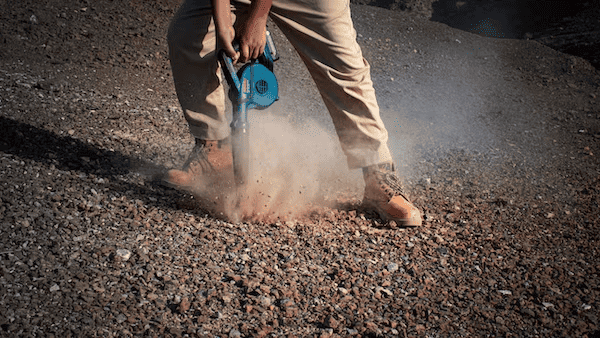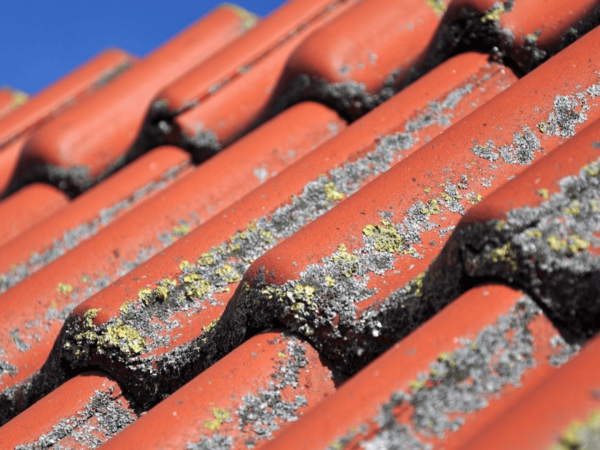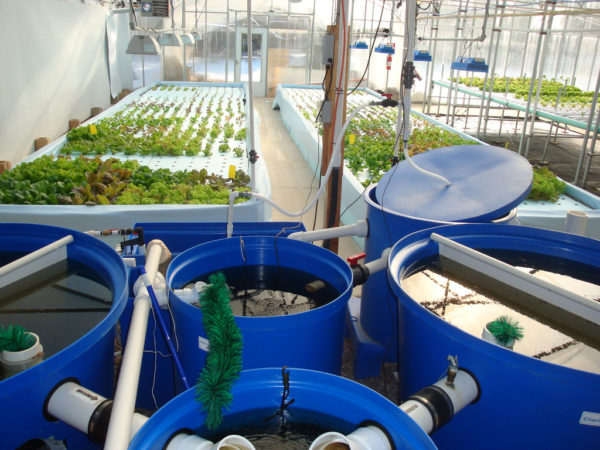Planning to use an electric leaf blower but don’t know what works best for your needs? Learn how many watts you should use and other best practices here.
Leaf blowers have become essential tools for yard maintenance, making clearing leaves and debris easier and more efficient. However, you may notice that all this efficiency is not translating to your energy consumption. This is especially true when you use them for an extended period.
A possible scenario is that you’re using the incorrect leaf blower for your clearing requirements. One way to find out is by knowing the wattage and ampere specifications of electric leaf blowers.
Table of Contents
How many amps does an electric leaf blower use?
To determine the wattage of an electric leaf blower, we first need to understand the amperage it consumes. Amps measure the electric current flowing through a device. Most electric leaf blowers require an average amperage of 7 to 12 amps. However, some heavy-duty models may require higher amperage, so consider the energy requirements.
Occasionally, you may find a product that provides the motor size in horsepower rather than amps. Horsepower, similar to watts, is a unit of power measurement. You may need to convert hp to watts to get the accurate amperage you need.
Importance of Knowing Wattage Requirement for Electric Blowers
Understanding the wattage requirement of an electric leaf blower is crucial for several reasons. One is power source compatibility. Different electric leaf blowers have varying wattage demands. You can ensure your power sources, such as an electrical outlet or a generator, can provide sufficient power to operate the blower effectively.
It’s also critical for preventing overloading. Overloading a power source can lead to tripped breakers, blown fuses, or even damage to electrical circuits. Knowing the wattage requirement can avoid overloading your power source and ensure your leaf blower’s safe and uninterrupted operation.
If you need to clear a bigger area and use an extension cord with your electric leaf blower, knowing the wattage allows you to choose the right cord gauge. Thicker cables with lower gauge numbers can handle higher wattage loads without experiencing voltage drops that may compromise the performance of your blower.
Types of Leaf Blowers

Leaf blowers come in various types, each with its own advantages and limitations. Here are some common types:
Light-Duty Electric Leaf Blowers
Light-duty electric leaf blowers are designed for smaller yards or light debris clearing. They are usually compact, lightweight, and easy to maneuver. Their wattage ratings range from 500 to 1,200 watts, providing adequate power for typical residential use.
They can either be:
- Corded Leaf Blowers
Corded leaf blowers are electric-powered devices that offer reliable and consistent performance, eliminating the need for battery recharging. These blowers are equipped with higher wattage ratings, making them well-suited for larger yards or extended periods of use. Their robust power output allows for the effective clearing of leaves and debris.
One notable limitation of corded leaf blowers is their range, which is dictated by the length of the power cord. This means that you are restricted to the proximity of an electrical outlet. It may be necessary to utilize an extension cord. Using an extension cord, you can extend the reach of the blower and cover a larger area without being constrained by the cord’s length.
Despite the limitation, corded leaf blowers offer consistent power and performance. They are a popular choice for those who require a powerful tool for maintaining larger yards or extended use.
- Cordless Leaf Blowers
Cordless leaf blowers provide users with enhanced mobility and convenience due to their cord-free operation. These blowers are powered by rechargeable batteries, allowing you to move freely without being limited by the length of a power cord. This feature is particularly beneficial for larger yards or areas where access to electrical outlets may be challenging.
One huge plus of using cordless leaf blowers is their lightweight design. Without the burden of a cord, they are typically lighter and easier to maneuver, reducing fatigue during prolonged use.
Additionally, cordless blowers produce less noise than their corded counterparts, making them a favorable choice for noise-sensitive environments or urban neighborhoods where noise restrictions may exist.
However, cordless leaf blowers generally have lower wattage ratings than corded models. The wattage of cordless blowers typically ranges from 200 to 800 watts, although this can vary depending on the specific model and the capacity of the battery used. The lower wattage translates to shorter operating times before the battery needs to be recharged. Be mindful of the battery life and plan your usage accordingly to avoid interruptions during your leaf-blowing tasks.
Cordless leaf blowers are popular among homeowners and gardeners who prioritize mobility, convenience, and quieter operation. They offer the freedom to move around without the hassle of cords and provide a suitable solution for smaller to medium-sized yards or areas where a power source may not be readily available.
Industrial Electric Leaf Blowers
Industrial electric leaf blowers are specifically designed for heavy-duty use and are intended for professional landscapers and commercial applications. These powerful machines are built to handle more demanding tasks and cover larger areas efficiently.
One distinguishing feature of industrial electric leaf blowers is their significantly higher wattage ratings. These blowers often exceed 2,000 watts, providing immense power to tackle challenging debris and leaf-clearing tasks. The high wattage allows for superior performance and the ability to move large volumes of leaves and debris quickly and effectively.
Due to their robust construction and powerful motor, industrial electric leaf blowers can generate strong airflow and high velocity. They can easily handle dense layers of leaves, wet debris, and other stubborn materials.
Professional landscapers and individuals working in commercial settings benefit from the efficiency and reliability of industrial electric leaf blowers. These machines significantly reduce the time and effort required for large-scale leaf-clearing projects, increasing productivity and cost-effectiveness.
Due to their size, power, and noise levels, industrial electric leaf blowers may not be suitable for residential or smaller yards. Their heavy-duty nature and higher wattage ratings make them better suited for professional landscaping projects, municipal maintenance, or large-scale commercial operations.
Best Practices for Using Leaf Blowers
To ensure safety and optimize the use of leaf blowers, here are some best practices to follow
1. Use the Correct Leaf Blower
Choose a leaf blower appropriate for the yard size and the nature of the debris. Using a high-powered blower for a small, delicate area may cause damage while operating a low-powered blower for a large area will be ineffective and time-consuming. Since you spend more time doing the task, you also use more energy, especially if you have a corded leaf blower.
2. Wear Personal Protective Equipment (PPE)
When operating a leaf blower, prioritize your safety by wearing the appropriate personal protective equipment (PPE). Leaf blowers generate high speeds and powerful airflow, which can dislodge dust, debris, and allergens, posing potential hazards to your eyes, ears, and respiratory system.
Protective eyewear items shield your eyes from flying debris such as rocks, twigs, or dust particles. You can prevent eye injuries and ensure clear vision while operating the blower by wearing safety glasses.
The noise produced by leaf blowers can reach high decibel levels, which may cause hearing damage over time. Wearing earplugs or earmuffs can significantly reduce the risk of noise-induced hearing loss and promote a safer working environment, mainly when operating industrial leaf blowers.
Furthermore, considering the potential for dust and allergens to become airborne during leaf blowing, it is advisable to wear a dust mask or respirator. These PPE items help filter out harmful particles and prevent inhalation, safeguarding your respiratory system from potential irritants or allergens.
Remember, the specific PPE requirements may vary depending on the environment and the type of debris being blown. Always refer to the manufacturer’s guidelines and recommendations for the appropriate PPE to wear when using your leaf blower.
3. Be Mindful of Others
Leaf blowers can produce significant noise levels, disrupting the peace of your surroundings. Being considerate of noise pollution is respectful towards others and helps maintain good relationships with your neighbors.
Avoid operating the leaf blower during early morning or late-night hours when people may be resting or trying to enjoy a peaceful environment. These times are typically associated with quiet hours, and the noise from a leaf blower can cause unnecessary disturbance.
The high-speed airflow generated by the blower can cause discomfort, potential eye injuries, or even blow debris into the person’s eyes. Always maintain a safe distance from people, pets, and delicate objects to prevent accidents or harm.
4. Maximize the Use of Leaf Blowers
Note that leaf blowers aren’t simply to clear leaves out of your yard. You can use them to melt snow on the driveway. A leaf blower is a highly effective method for efficiently drying your car. It can rapidly and effortlessly remove water droplets, resulting in a fully dry vehicle within a few minutes. This is particularly advantageous when time is limited or when you need to swiftly dry your car before embarking on a journey.
Key Takeaways
Leaf blowers may be a simple piece of equipment. However, it can save you tons of time and effort if you know the basics, including its wattage and amperage specifications. After all, you’d want optimal performance from your tools. Plus, it keeps you safe from power-related issues like voltage drops.
That said, make sure to follow the best practices for safe and efficient leaf blowing.
- Knowing the wattage requirement of an electric leaf blower helps ensure compatibility with your power source and prevents overloading.
- Amps and volts are used to calculate the wattage of an electric leaf blower.
- Corded leaf blowers offer consistent performance, while cordless blowers provide increased mobility.
- Light-duty electric blowers are suitable for small yards, while industrial blowers are designed for heavy-duty tasks.
- Follow best practices for efficient yard maintenance.










